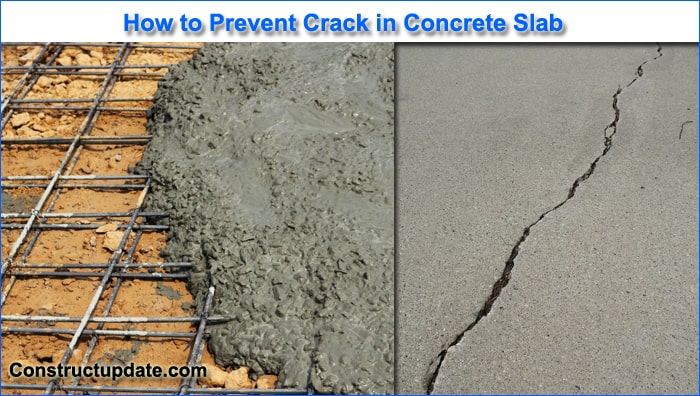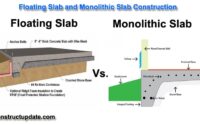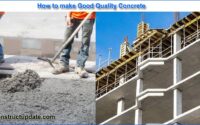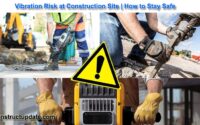Prevention of Concrete Cracks | Causes of Concrete Crack | How to Repair Concrete Cracks
One of the most resilient and long-lasting materials you can utilise around your house is concrete. Nearly all types of concrete contain cracks.
Whether the cracking starts right away or develops years after the concrete was laid. Concrete can crack for a variety of causes. Cracks that are between 1.5mm and 6.25mm broad are typically acceptable.
Two Types of Cracks in concrete
Active Cracks
Cracks that are actively growing throughout time include those that extend, widen, or deeper. These kinds of fissures are typically highly harmful as well.
Dormant cracks
Dormant cracks do not alter unless they are impacted or exposed to moisture. Prior to things getting worse, you must get it under control.
- Shrinkage Cracks
- Settlement Cracks
- Thermal Stresses cracks
- Corrosion of Reinforcement
- Crazing Cracks
- Overloads cracks
- Lack of control joints in concrete slab
- Spalling

Causes of cracks in concrete
Shrinkage Cracks
There are two types of plastic shrinkage: drying shrinkage and shrinkage.
When there is a high water ratio, plastic can shrink. The solid components of the mixture will separate if there is too much water since it will take up space. When the water evaporates, the mix’s empty spaces persist, sometimes leaving very small fissures.
Drying shrinkage is a phenomenon that results from the contraction of a hardened concrete mixture as a result of the capillary loss. These variables include the member size, member characteristics, component proportions, mixing technique, moisture content during curing, and dry atmosphere.
This shrinking raises the tensile stress, which could result in cracking.
Settlement Cracks
Settling results in a crack. In other words, if the foundation of the house settles down because the earth beneath it is unable to hold the weight of the building, a fracture will result from the force of one portion of the house moving while the neighbouring part remains stationary. The component that fractures is under strain from opposing forces, and finally, the break appears to release the pressure.
The structure’s shuttering frequently settles slightly during the pouring of concrete or during vibration, which also causes fractures in the concrete’s surface.
Thermal Stresses cracks
Thermal strains are related to temperature fluctuations within a slab as well as temperature development as concrete hydrates. The temperature of the air and ground around a slab can also affect thermal cracking. Mass concrete, concrete with a high proportion of portland cement, or concrete with hot water added for use in cold climates
A higher inside temperature than the exterior might cause cracking in mass concrete.
Corrosion of Reinforcement
Steel that has rusted typically takes up significantly more space than steel that hasn’t and creates bursting strains that can cause the concrete cover to crack. The steel will be parallel to the fissures that develop on the concrete’s surface.
Corrosion typically affects reinforcing bars closest to the surface first. Over shear reinforcing on the sides and soffits of beams in exposed places will therefore be a typical occurrence of forms of fractures caused by corrosion.
Iron oxides and hydroxides are created during corrosion of the steel, and their volume is significantly more than the volume of the original metallic iron. This volume increase leads to high radial bursting stresses around reinforcing bars and cracks.
Crazing Cracks
Crazing cracks are extremely tiny surface fissures that resemble spider webs and are brought on by the slab’s premature drying. Crazing cracks are prone to develop if the slab doesn’t have enough moisture or loses moisture too quickly. These small cracks don’t require repair because they are just visible on the surface and are not dangerous.
Lack of control joints in concrete slab
Control joints help concrete fracture where you want it to in a concrete slab. The joints must not exceed 2-3 times (in feet) the concrete’s thickness and should match the slab’s depth (in inches). Therefore, joints in 100mm concrete should be 2.5–3 metres apart.
Overloads cracks
A concrete part that has been overloaded may develop many forms of cracks. The type of loading stress can be determined based on the orientation and location of the crack (vertical, diagonal, top, bottom, etc.).
Additionally, it is generally known that cracks in concrete members are caused by load-induced tensile strains.
Spalling
Rust swells to ten times its original volume when steel corrodes, which causes internal tension stresses in the concrete. The parts between the rusted steel and the closest surface will break off because the tension forces are too great for the concrete to handle.
How to Prevent Cracks in Concrete Structures
Reduce Water Content in Concrete:
Concrete needs very little water to reach its optimum strength. To get the optimum strength of concrete, we needed to keep the amount of water to a minimum. Concrete can break when the amount of water in it increases because it will lose strength. Just enough water is reduced in concrete to make it functional. Consequently, a rise in water can weaken concrete.
Less water content increases the durability of concrete for workability, which can be covered by the use of plasticizer or superplasticizer. The water ratio in concreting shall not exceed 0.55.
Finishing of Concrete Surface:
When doing finishing operations, always use comprehensive finishing procedures and the right timing. It’s frequently advised to use flat troweling and floating.
Finishing the concrete when there is bleed water on the surface causes the water to return to the concrete rather than evaporate, which causes cracks.
Proper Curing of Concrete:
Temperature has an impact on concrete as well. The finished product will be impacted if a large temperature drop prevents the concrete from curing. Additionally, if you pour concrete outside in the light and heat, it will dry too quickly and crack.
Vibration of Concrete:
Concrete vibration lessens the likelihood of cracking. To prevent cracks, properly vibrate to let out trapped air.
Proper Compaction of concrete:
We must properly compact the earth prior to pouring the concrete. and after that, when the concrete was laid, it needed to be thoroughly compacted. After some time has passed after the concrete was placed, it will begin to crack if it is not compacted. Because the strength of concrete is reduced when it is not compacted.
- After a slab has expanded or contracted by no more than 32 metres, provide a joint.
- Use only corrosion-resistant steel in the structure.
- inspect the shuttering’s supports
- Give adequate coverage in accordance with Indian standards.





